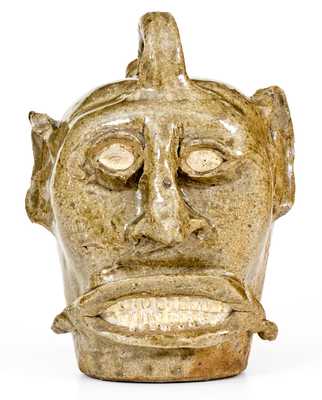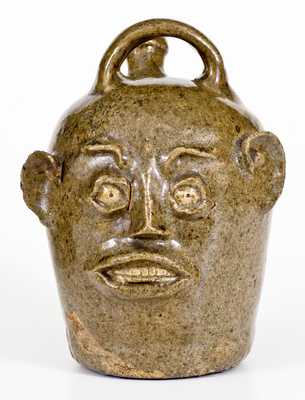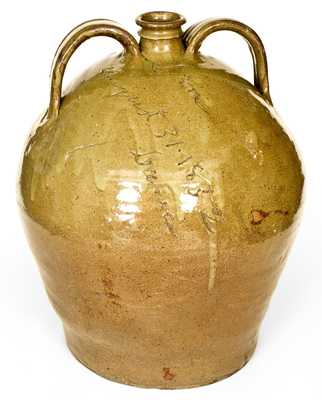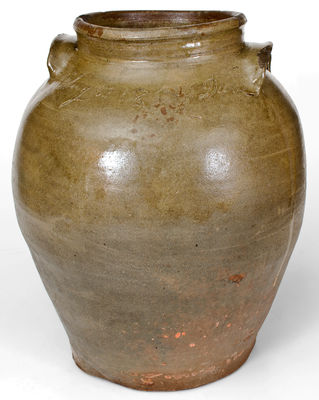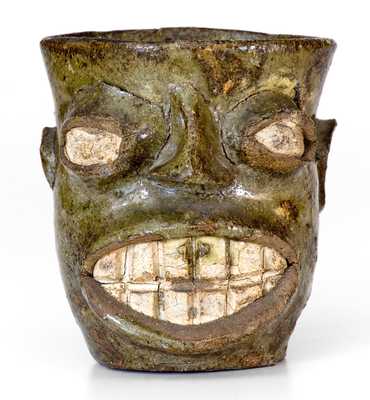Rare and Important Alkaline-Glazed Stoneware Face Jug, Edgefield, SC origin, circa 1850-1870, ovoid jug with hand-modeled and applied clay face including kaolin eyes set deep within large eyelids, a single curved eyebrow, small C-scroll ears, open mouth with numerous small, finely-carved kaolin teeth, and a finely-sculpted nose with carved nostrils. Light depressions on the sides of the jug add realism to the face's cheek structure. Surface covered in a heavy, olive-colored alkaline glaze with appealing glaze runs throughout. This recently-discovered work is exceptionally rare in its large size, measuring about one-quart in capacity, with measurements of 7 1/4" tall, approximately 5 1/4" wide, and approximately 20" in circumference when including the nose. The vast majority of surviving Edgefield face vessels of this form are significant smaller. The refinement in the sculpting of the nose is also unusual, indicating a maker well-versed in hand-modeling and face jug production. The nose's form appears reminiscent of the work of Thomas Chandler, as seen on his iconic "CHANDLER MAKER" monkey jug, as well as several earlier examples attributed to his hand by Philip Wingard in his article, "From Baltimore to the South Carolina Backcountry: Thomas Chandler's Influence on 19th-Century Stoneware", Ceramics in America 2013. The mouth's numerous small, delicately-carved teeth, also relate to Chandler's work, different than the majority of known Edgefield face vessels. While the jug's nose and teeth suggest the maker may have been influenced by Chandler's work, the face's other features and, to some extent, the glaze, indicate it was not made by him and likely dates to some time after his death in 1854. Nevertheless, this possible transfer of style may be something to investigate further. Featuring a rare size, strong glaze, and excellent modeling with an unusually-subdued expression, this face jug is considered a significant new discovery of a prized Southern ceramic form. Provenance: Found several months ago by the consignor in the Southeastern U.S. Recent restoration to handle and spout. A long, thin horizontal line, which has been sealed and colored, extending across reverse side, onto both sides of jug. A faint vertical line, probably only in the glaze, to cheek area on both sides of jug. Shallow chips to ears. H 7 1/4".













